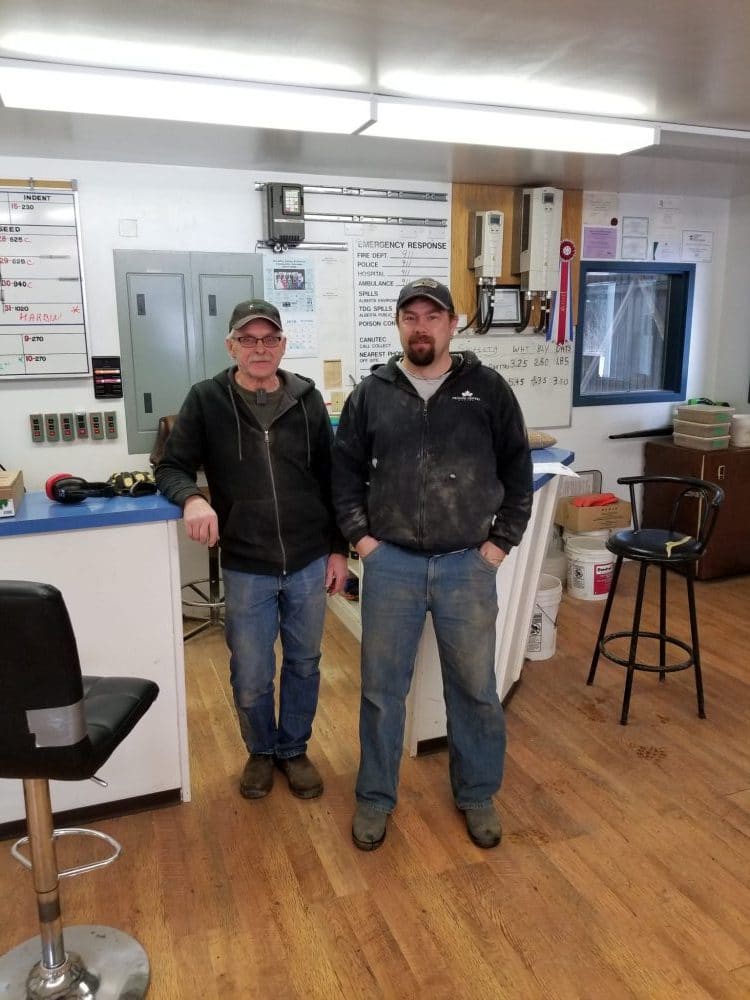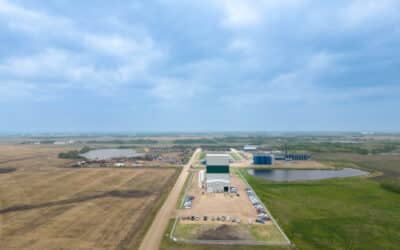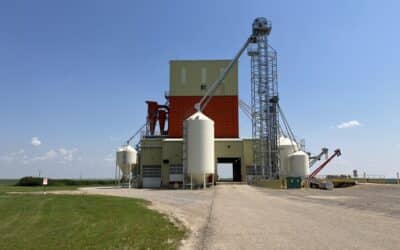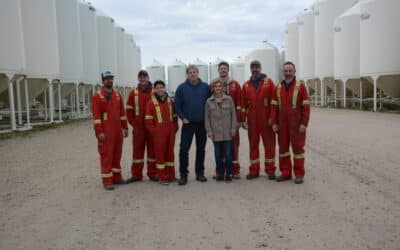A good crop starts with good seed, says the manager of Battle River Seed Cleaning Co-operative.
Mark Kaese has been in the seed cleaning business for 36 years, and in that time, he has seen many changes in technology, new seed varieties and products. However, one thing that has never changed, and never will, is the basic fact that a good crop starts with good seed.
“You don’t breed a cattle herd by getting rid of your best cows and bulls,” says Kaese, who is manager at the farmer-owned Battle River Seed Cleaning Co-operative at Paradise Valley, Alta. “It’s the same with seed. You clean your biggest and best seed to put it in the ground because all the inputs in the world won’t grow your crop if the seed isn’t any good.”
It’s by paying attention to the basics and providing the best quality seed that Battle River has stayed in business since 1954, serving its 167 members and other producers in the area.
New Technology
Last year, Battle River bought a new colour sorter to replace its previous monochromatic one, which has allowed the company to provide even better service to its customers.
“The colour sorter has made a tremendous difference, especially to remove ergot out of wheat and things like that, which were hard to get out before,” says Kaese. “It gives us the ability to provide a better product to our customers.”
The new, state-of-the-art true colour sorter has a 14-inch touchscreen and infrared cameras that see true colour differences in the seed and gives improved accuracy and increased flexibility to sort out things like ergot, wild oats, green seed, split peas or any other chosen parameters.
“We can do more things with this sorter because it sees the full spectrum of colour, whereas the old one could only see dark and light,” says technician, Dan Fehr. “For example, if we have wheat going through and some of it is green, we can get rid of the green wheat. Whereas, before, the sorter couldn’t distinguish between the red and green kernels. It fine-tunes the finished product.”
Battle River was one of the original seed cleaning co-operatives in Alberta established as a provincial-federal-community enterprise, and is governed by a board of 10 directors, with four staff who operate the plant. The co-operative has two full-time and two part-time employees who help out in the busy season from December to the end of May, and offers a profit share incentive.
A Six-Step Process
Battle River Seed Cleaning Co-operative is a registered seed establishment approved by the Canadian Seed Institute for pedigreed seed cleaning, and handles around 900,000 bushels of seed a year, a little over half of which is pedigreed seed. It can clean and treat coarse grains, oilseeds and peas using a six-step process.
First, the grain goes through a debearder that removes hulls or beards from grains making it easier to clean.
“It is like a stationary threshing machine,” says Kaese. “There are rub bars in it that rub off the hull and when you put barley through it, it knocks the beards off the ends so it’s easier to clean up.”
The seed then goes though a nine-roll Carter Day Indent machine. “The indent machine has a cylinder with rolls that have different sized indents, so it takes the good heavy seed up and the light chaff and broken seeds fall out of the indent and go into the screenings,” says Kaese.
Next, the seed runs over a 525 Ultrafine Carter Day Air & Screen, which blows away any lighter chaff still remaining and sorts according to seed size.
“There is air going through the machine that pulls off any light material we missed earlier, then it flows over round-holed screens that let grain of a certain size through,” says Kaese. “We size it for the larger material, so if there are stalks or anything, they will go into screenings. The seeds drop onto different-sized, slotted screens, depending on the size of the good grain we want to end up with.”
The next step is the LMC Gravity Table Marc Model 500, which uses specific gravity to move heavy kernels up an inclined shaking screen and discharge them into the colour sorter, which is the final cleaning step.
Seed Treatment has Come a Long Way
Battle River also has a USC 2000 automated seed treater, which offers the option to add a seed treatment before the customer picks the seed up. Kaese says that’s probably one of the biggest changes he’s seen in the business over the past few years.
“The quality of seed treating equipment has come a long way over the past five years or so, and it’s easier to put precisely the right amount of seed treatment on each seed,” he says, adding when he first started in the industry in 1983, there weren’t too many farmers treating seed, and nowhere near as many products available as there are today. That has changed a lot and has been driven by the development of higher yielding varieties.
“Back in the ’80s, if farmers had a 40-bushel wheat crop, they had a bumper crop. Now if they have a 40-bushel wheat crop, they think it’s a crop failure because the yields are up in the 80- to 90-bushel per acre range on average in this area,” says Kaese. “Now, pretty well everybody treats their seed because farming has become a business and farmers want to protect that yield as much as possible.”
Staying Up to Date
Kaese says he sees some changes coming in the next 10 or so years, including the continued release of new hybrids and varieties, but isn’t sure how the adoption of proposed royalties to fund cereal wheat development, which are still under discussion, might affect the industry. However, Kaese strongly believes it’s important for growers to continue to have the ability to clean their own seed.
With other seed cleaning co-operatives close by to the north, south and west, Battle River has always focused on serving its local market well, and to do that they are committed to upgrading to the best and latest equipment as it comes available and staying ahead of industry trends.
“When anything new and better comes along on the market, we look at it and if it’s going to be better than what we have, we install it because we are always striving to be proactive rather than reactive to what the consumer wants,” says Kaese. “Our board always has in mind that our customers are also the owners. We want to operate as cost-effectively as we can, while taking care of what we need to do to be viable and up to date with everything, so we can give something back to them at the end of the day.”





